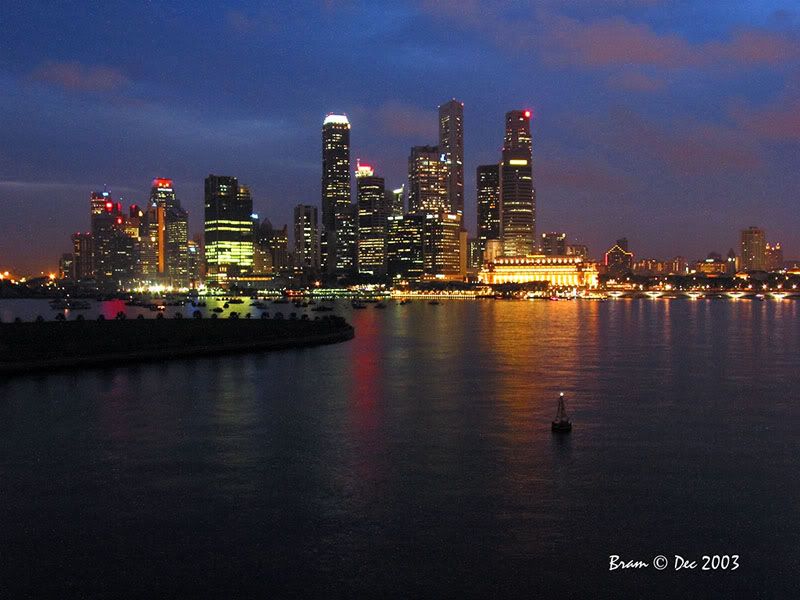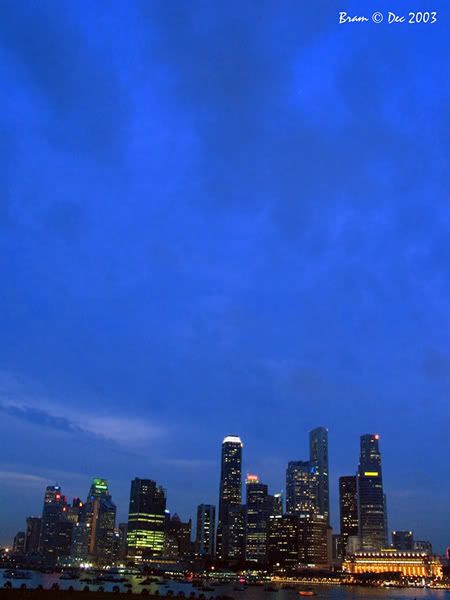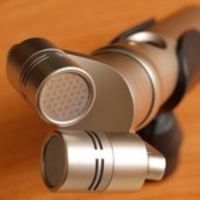-
Content Count
820 -
Joined
-
Last visited
Posts posted by bpribadi
-
-
The regulator price is SGD 3.66 before GST. The wonderful thing from this regulator is, adjustable, yet only need around 0.6 volt higher input voltage. Compare to the LM317 which needs 5 volts higher voltage
 This regulator is suitable for battery operated device. It also has battery reverse polarity protection, so no need to worry about it
This regulator is suitable for battery operated device. It also has battery reverse polarity protection, so no need to worry about it 
I set the voltage at +7 and -7 volts, so it can be powered by any common 15 volts adapter (which is ussually has output more than 16 volts), or 2x 9V batteries.
The board is ready! I didn't use the layout above, because I had made it base on the previous layout which is actually a waste (using + and - regulators). Anyway the board has undergo a lot of modification, because of some mistake I made on the previous power supply design. And I'm glad I just made it right last night
 But it won't looks the same as the new layout.
But it won't looks the same as the new layout.Just a note to those who are going to use LM2991 as a negative voltage regulator, I put 33uF tantalum between the refernce voltage (the adjusment pin) and the ground, and it caused instability. So now I only put the 100nF, and it is stable now. (it took a few hours trouble shooting to found it
 but I learnt a lot from it
but I learnt a lot from it  )
)Now I'm preparing all the cabling and the box, cutting and drilling hole here and there.
I will post some picture when they are ready

Thanks for your interest!
Bram
-
Which is out of the question! At least you got my hopes high... until that last line.I think you can ask the shop to DIY it for you

-
If budget is concerned, and 5 metres is the minimum length, try my favorite cheap cable.
S-VHS cable, SGD 2.5 per metre at the shop beside Kaichin (right side, forget the name), and the jack and socket which should cost no more than SGD 6. So total SGD 18.5.
Unfortunately I don't have the pic of the cable. The cable come as one cylinder (the outer insulator), inside there are 2 individual coaxial cables. The size just nice, tightly fit with the common cheap (yellow/gold) stereo jack and socket. The conductor is pure OFC. Sounds good, and effectively blocks hum.
But you have to DIY

-
Nice casing

And what are those hi fi boxes on the background



-
Thanks Digi!

Here is the power supply schematic with LDO regulator LM2941. It has reverse polarity protection, so input diode is not necessary, and it only needs around 0.6 volt higher input voltage than the output. And the price is also reasonable


-
... or a new kit not yet assembled without chassis ?
-
The previous schematic has error on the power supply, the ground buffer should be put before the regulator, and resistors for voltage divider should be added before the buffer.
So after trial and error, I simplified the power supply design, so now it became cheaper and smaller
 Please check the modified board layout on the first post.
Please check the modified board layout on the first post. -
So I guess you don't need source anymore, just need to spend more on headphone amp and a good pair of headphones. Or, a good source with headphone output and a pair of cans.
-
Are you looking for speaker system or headphone system at home?
-
Happy Birthday! Hopefully you can get your bday pressie soon

-
Probably tube with CRC, or solid state are better options than CLC, because by nature L will slow down or reduce a fast current change, which is not good for sudden current demand by the audio circuit.
Let's keep exploring the best possibilities
 Schematic pictures would be nice if you guys have any new ideas
Schematic pictures would be nice if you guys have any new ideas 
-
Online order SGD 1513.- you check it from:
It is expensive, but it is really a good player.
-
Correction: The headphone output is fine when there is no connection between the line out and amplifier.
So I guess, it is my cheap amp that giving problem

The headphone output sounds very good. I'm going to compare it with PIMETA soon.

-
My friend asked me to buy SACD player from Sony, XA3000ES. So now I'm testing the deck before I deliver it to my friend.
It is a very well build player, weigh more than 8 kgs.
One thing that I found weird is with the headphone output. The line out (2 channel) has to be connected to an amp, and the amp has to be turned on, otherwise the headphone output clips.

Previously I didn't think of the line out, I just wondered why the low frequency always clips even when I turn the volume low. I listen the same CD, same track with my PCDP, it sounds ok, no clips. I plug in my RS-1 back to the SACD deck, same thing happen, the low freq clips.

At the end I found the solution as what I mentioned above.
Anybody know why?
I know that RS-1 is a low impedance headphone, anyway, it shouldn't clips right?

When the condition met, it sounds good, full, powerfull impact and very good transient. It sounds very clean and detailed, very natural and strong bass. Very good soundstaging, and never sounds harsh. I listen to Chesky Ultimate Demonstration disc, track 13, I can turn the volume very loud yet the strong sound of the saxophone sounds very natural and engaging. Very impressive player. Then my favorite tracks, 9 and 21, it sounds alive. I don't have good speaker system, so I comment base on my RS-1

Hopefully I can finish my PIMETA soon, so I can try it with the deck


-
Yup ! That's exactly what I did

On the last pic, you see the small plastic tab to lock the jack, I filed it a little bit, so unpluging the jack would be easier, but the locking function is still working.
-
Let me know how many you want, I have customer near Farnell and I go there quite often

-
I don't think it's worth the effort, and would be costly.
Toroid transformer is only less hum and smaller, but sound wise, I don't think there is any different. Unless not regulated (like power amp), than picking transformer will be more critical.

I prefer to save cost, concentrating to the audio line.
-
Thanks a lot Mackie!

I wonder if we put Op-Amp buffer after the tube, it might improve the bass.
-
now i still have DAC-1 for sale..let me know if you're interested..
Can you update us with the DAC-1 price?
-
Got to ask my wife to read it for me

In simple, do you think it sounds good? How about the bass compare to simple CMoy? I know that in midrange and treble tube will excels solid state.
-
Very nice, Bram. Good shots.Thanks Heady!
 dunno how he can get such close up shots but i'm impressed man.......
dunno how he can get such close up shots but i'm impressed man.......Tropicalrips C8080 can do it with it's super macro shots.
Or if you have any SLR fix lens, try the reverse lens method. The reverse fix SLR lens will become a very good macro adapter when use with any other SLR or prosumer digicam. The problem is to get the reverse ring adapter to mount the fix lens in front of the digicam lens. B&H in New York has them, but in Singapore so far I couldn't find it.
So, my solution, the cheaper is to use 2 of Cokin filter adapter ring, glue them front to front

Check this out:
http://www.mplonsky.com/photo/article.htm
Scroll down to 'Reversing a lens' section.
-
This time is not under-charge. Yesterday mukegile and me went to Farnell to check the price one more time, and he bought a few pieces as well. The price is correct, confirmed by the lady at the counter.
-
I would like to share some photos, taken December last year. Please forgive my G2 noise (no budget for big sensor digicam
 )
)


-
Very well composed! Nice pictures! Thanks for sharing

You make me want to upgrade my G2 to C8080




What are you listening to NOW!
in Music! Music!
Posted · Report reply
Sissel My Heart
Very nice album, like it very much !